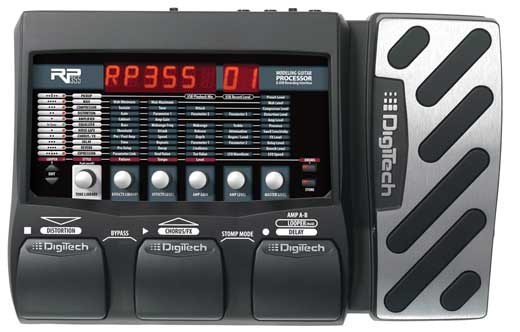
My first session with the Digitech RP255 as recording interface
Ed Abbiatti, the leader of the great Italian rock band Lowlands, asked me to play on several cuts on his upcoming CD, scheduled for release in early 2012. I did the first sessions in my home studio, using a Line 6 UX2 audio interface and Line 6’s Amp Farm software to do the amp modeling. After Ed heard the tracks, he asked me to lay down a hook riff on one of the pieces too. The only problem was that the deadline was Jan. 21, and by that time I was in Idaho, far from my home recording setup.
What I did have with me was the Digitech RP255. I’ve written previously about the fact that the RP devices function pretty well as audio interfaces, and this was the acid test. I set up the 255 with a tough Fender Bassman patch, plugged it into the computer via USB, and set to work.
I’ll cut to the chase: I was very happy with the sound of the tracks I laid down with the RP255, and Ed is too. Of course I couldn’t easily get EXACTLY the same sound on the RP that I got with the Line 6 software, so to make things easier for the mix engineer I re-recorded the entire part, not just the new hook riff. The RP did its job both as an amp modeler and as an audio interface; my audio recording software (Cakewalk Sonar 8.5) was very happy with the RP from the start, and the recording process was utterly glitch-free. It’s even more impressive when you consider how finicky my laptop is when it comes to recording; most of the interfaces I own just can’t operate with the low latency that’s needed for recording against a guide track, but the RP cruised right along.
I don’t think the RP is going to be my go-to computer audio interface, at least not in the immediate future, but it’s nice to know that I can make usable tracks with it when I need to. I’ll ask Ed if I can post a snippet or two of the tracks for all to hear. In the meantime, if you’ve got an RP, you’ve got a decent computer audio recording interface.
Related Posts
Leave a Reply
You must be logged in to post a comment.
WHAT’S NEW
Categories
- Audio/Video
- Blog
- Blue Future
- Digitech RP Tricks and Tips
- Discography, CDs, Projects, Info, Notes
- Featured Video
- For the Beginner
- Gallery
- Hunter's Effects
- Hunter's Music
- Huntersounds for Fender Mustang
- Meet the Pros
- More Video
- MPH: Maw/Preston/Hunter
- My Three Big Contributions
- Player's Resources
- Pro Tips & Techniques
- Recommended Artists & Recordings
- Recommended Gear
- Recorded Performances
- Reviews, Interviews, Testimonials
- The Lucky One
- Uncategorized
- Upcoming Performances
- Zoom G3 Tips and Tricks

